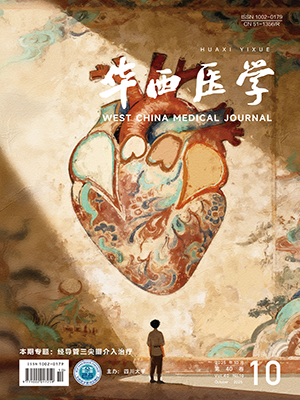| 1. |
Vellekoop J, Vrouenraets FP, Vander Steeg JW, et al. Indications and results of labor induction in nulliparous women: an interview among obstertricians, residents and clinical midwives. Eur J Obstet Gynecol Repord Biol, 2009, 146(2): 156-159.
|
| 2. |
Cromi A, Ghezzi F, Uccella S, et al. A randomized trial of preinduction cervical ripening: dinoprostone vaginal insert versus double-balloon catheter. Am J Obstet Gynecol, 2012, 207(2): 125. e1-e7.
|
| 3. |
Jozwiak M, Bloemenkamp KW, Kelly AJ, et al. Mechanical methods for induction of labor. Cochrane Database Syst Rev, 2012, 3: CD001233.
|
| 4. |
张力, 刘兴会, 卫蔷, 等. 双球囊导管在足月妊娠促宫颈成熟和引产中的应用. 四川大学学报: 医学版, 2013, 44(3): 497-501.
|
| 5. |
Lumbiganon P, Laopaiboon M, Gülmezoglu AM, et al. Method of delivery and pregnancy outcomes in Asia: the WHO global survey on maternal and perinatal health 2007-2008. Lancet, 2010, 375(9713): 490-499.
|
| 6. |
Koroukian SM. Relative risk of postpartum complications in the Ohio Medicaid population: vaginal versus cesarean delivery. Med Care Res Rev, 2004, 61(2): 203-224.
|
| 7. |
Lydon-Rochelle MT, Cahill AG, Spong CY. Birth after previous cesarean delivery: short-term maternal outcomes. Semin Perinatol, 2010, 34(4): 249-257.
|
| 8. |
Silver RM. Delivery after previous cesarean: long-term maternal outcomes. Semin Perinatol, 2010, 34(4): 258-266.
|
| 9. |
Macones GA, Peipert J, Nelson DB, et al. Maternal complications with vaginal birth after cesarean delivery: a multicenter study. Am J Obstet Gynecol, 2005, 193(5): 1656-1662.
|
| 10. |
Landon MB, Leindecker S, Spong CY, et al. The MFMU cesarean registry: factors affecting the success of trial of labor after previous cesarean delivery. Am J Obstet Gynecol, 2005, 193(3 Pt 2): 1016-1023.
|
| 11. |
Spong CY, Landon MB, Gilbert S, et al. Risk of uterine rupture and adverse perinatal outcome at term after cesarean delivery. Obstet Gynecol, 2007, 110(4): 801-807.
|
| 12. |
Grivell RM, Barreto MP, Dodd JM. The influence of intrapartum factors on risk of uterine rupture and successful vaginal birth after cesarean delivery. Clin Perinatol, 2011, 38(2): 265-275.
|
| 13. |
胡娅莉, 王志群. 宫颈成熟与引产. 中国实用妇科与产科杂志, 2002, 18(5): 270-272.
|
| 14. |
Lalonde AB. Guidelines for vaginal birth after previous cesarean birth. Ggynecol Obstet, 2005, 89(3): 319-331.
|
| 15. |
Lalitkumar S, Bygdeman M, Gemzell-Danielsson K. Mid-trimester induced abortion: a review. Hum Reprod Update, 2006, 13(1): 37-52.
|




